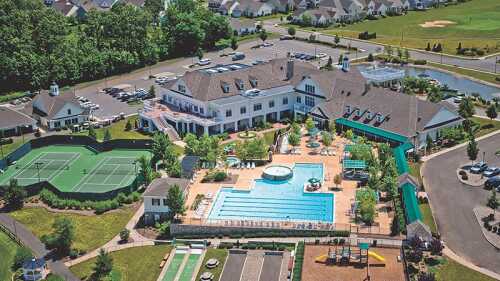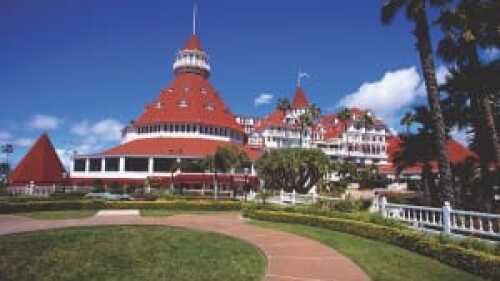Rod Slifer has a half century’s worth of Vail memories. “I came to Vail from Aspen, where I was a ski bum,” Slifer said this summer during an address to real estate editors gathered at Vail. “When I wasn’t skiing or teaching skiing, I was waiting tables or painting houses. It was the summer of 1962, and there was nothing here.”
But he and his partners had grand ideas about what could go there: they wanted to build a ski slope on the mountain, about 100 miles (160 km) west of Denver. Vail, with more than 5,200 acres (1,700 ha) of terrain, now is the largest ski resort in the United States in terms of skiable area, according to mountainvertical.com. The resort’s pioneers had to start from scratch. “We’d get out there on the mountain and remove dead trees ourselves,” Slifer said. He noted that the town did not even have a planning commission at the time.
But there is one memory from those 50 years that Slifer might like to jettison: snowfall during the 2011–2012 ski season was the worst he could recall. “We are in business with Mother Nature,” Slifer said. “We had a good year in Vail, despite the lack of snow. But I would hate for this to become the norm.”
Abundant snowfall during the previous season had shattered records, so it is too early to predict that a snow drought will plague the mountains in Colorado and elsewhere this season the way the rainfall drought swept much of the nation during the summer.
And snow is only one contributor to the real estate and resort businesses in the mountains, says Harry Frampton. Frampton, ULI chairman from 2003 to 2005, is the past president of Vail Associates (now Vail Resorts), the developer of Vail and nearby Beaver Creek. Frampton is chairman of the nonprofit Vail Foundation and a partner with Slifer at their namesake firm, Slifer Smith & Frampton Real Estate, a leading real estate brokerage company in the Vail area, as well as in nearby resorts in Summit County, such as Breckenridge, Keystone, and Copper Mountain.
“When I look at the lack of snow last season, what I really think is that we saw a drop in Front Range skiers from the Denver area, but not such a big drop from the destination skiers,” Frampton says. “People come to Vail from all over the country and all over the world. Those people still came here and ate at the restaurants, shopped in the boutiques, and visited the spas. It was the local market that backed off. When we live in the mountains or live in Denver, we get really picky. We like to ski in powder, not on the rocky stuff. Furthermore, Vail Resorts has invested a lot of money in cutting-edge snowmaking equipment during the past four or five years, so the skiing, especially in the back bowls, wasn’t as bad as many might think.”
Hospitality and Real Estate
| Solaris Residences has some of the highest-priced real estate in the heart of Vail. |
When talking about mountain resorts, it is important for people to distinguish between the resort/hospitality business and real estate, Frampton says.
“Those are two different things,” he says. “In 2009 and 2010, the real estate business was kind of bad here, as it was in most, if not all, resorts. But the resort business has been performing quite well in recent years. I think that Vail escaped the worst of it because it did not have the excessive overbuilding you found in some other places. Yes, we did have our share of bankruptcies and foreclosures. That happens in every recession. Some people had to sell at a loss for financial reasons, and banks took over other properties. That is always going to happen. It is part of the cycle.”
In the first six months of 2012, buyers paid $662.7 million for residential and commercial real estate and land in Eagle County, with $607 million of that accounted for by residential transactions. The sales total is about 12 percent more than the $589.1 million buyers paid for all real estate in the first half of 2011, according to an analysis by Denver-based Land Title Guarantee Co. Sales volume for all real estate in the first half of 2012 was 57 percent above the low for half-year sales reached during the real estate crash of 2009. However, this year’s first-half figure is still a far cry from that in 2008, when buyers paid more than $1 billion for real estate in just the first half of the year, according to Land Title.
Sales tax revenues in Vail in 2011 actually grew by 11 percent from 2010, and new inventory from projects such as the Solaris high-end condominium project and a Four Seasons hotel and fractional resort development helped boost property tax revenues, even though values for existing properties decreased by 32 percent, according to projected 2012 collections by the Eagle County Assessor’s office, which covers Vail.
Whereas the multimillion-dollar home sales are the ones that grab the headlines, sales are strongest at much lower price points, says Bob Rulon, vice president at Land Title. “Homes priced at $350,000 and under are getting rapidly absorbed,” he says. “That is kind of where the action is.”
Pitkin County, which includes Aspen, is not recovering at such a fast clip. Real estate sales in Pitkin in the first half of the year were $593 million, down 16 percent from the first half of 2011 and a fraction of the record $1.4 billion in sales logged during the first half of 2007, according to Land Title.
Sales volume is down, despite hedge-fund billionaire John Paulson’s $49 million purchase in June of Saudi Prince Bandar bin Sultan’s sprawling estate in the Starwood Ranch neighborhood of Aspen. That sale, likely to be one of the largest in the country this year, is still far below the $135 million the kingdom’s former ambassador to the United States initially was asking for his Hala Ranch when he placed it on the market in 2006. Following the purchase, Paulson’s office released a statement noting that the purchase price “represents a substantial discount to the asking price,” and includes 38 separate acres (16 ha) that had never been on the market before.
Despite the rocky real estate market, Vail Resorts, which trades under the symbol MTN on the New York Stock Exchange and has a market cap of almost $2 billion, is holding its own. “Despite unprecedented snow conditions during the 2011–2012 season, Vail Resorts delivered an approximate 1 percent increase in ‘mountain reported’ EBITDA [earnings before interest, tax, depreciation, and amortization] in the third quarter compared with the prior year,” says Alex Iskenderian, chief operating officer for Vail Resorts.
“The 2011–2012 season was the most challenging winter as it relates to snowfall that most of us can recall, but as a company Vail Resorts was able to deliver a solid financial performance in less-than-favorable conditions,” he says. “This performance demonstrates the stability and resiliency of our business model, which benefited from our growing season-pass business, as well as the quality of our resorts and the breadth of the experience we offer, which attracted guests throughout the season.”
He shares Frampton’s take on the role of snowfall. “Of course snow is important to Vail,” he says. “However, Vail Resorts has invested in state-of-the-art, efficient snowmaking and grooming capabilities which help ensure we’re offering our guests the highest-quality snow surfaces and the most amount of trails open as possible. Our resorts also offer many other world-class activities and events that make up a world-class vacation experience—even for guests who may not ski or snowboard—including great après-ski and dining, spas and shopping, ice skating, cross-country skiing, snow tubing, and much more.”
He notes that Vail also managed to weather the bursting of the real estate bubble. “Vail came through the worst economic downturn in most of our memories with four spectacular, brand new property developments or redevelopments,” Iskenderian says. Those projects are the following:
- Ritz-Carlton Residences of Vail, which has 71 condo units priced from $2.46 million to $8.98 million;
- Four Seasons Resorts & Residences Vail, which has 121 guest rooms in a contemporary alpine lodge–style building, plus two additional components—Club Vail and Private Residences, nine fractional residences sold in one-12th deeded interests ranging in price from $303,000 to $534,000 per fraction, and the Four Seasons Private Residences Vail, with 16 condominium units ranging in price from $2.7 million to $14.5 million;
- Solaris Residence, which has some of the most expensive real estate in the heart of Vail—79 units priced at $1.45 million to $19 million; and
- the Sebastian, a 100-room/seven-suite hotel and 36-unit private residence club, with resort memberships starting at $225,000 for four weeks and club memberships starting at $395,000 for eight weeks.
“Vail went through a renaissance that started prior to the downturn,” he adds. “Whereas at so many other resorts development and construction were halted in the midst of the downturn, Vail saw a tremendous renewal during this period with new lodging, new restaurants, public amenities, shops, and more.”
Focusing on Sustainability
Vail Resorts strives to make sure it is operating and growing in a green manner, says Iskenderian. “Our success as a company is intimately connected to the environment,” he says. “We regularly set the standard for responsible design and construction, including utilizing recycled construction materials, regional products, and energy-efficient and water-saving features.”
| The Sebastian is a hotel and private residence club. |
For example, its One Ski Hill Place, Breckenridge’s first RockResort (a luxury hotel chain owned by Vail Resorts), was recognized as one of Colorado’s most environmentally friendly properties. The ski-in, ski-out property at the base of Breckenridge’s Peak 8 was certified as the town’s first Green Globes–built property and Colorado’s highest Green Globes–rated development. Green Globes is an independent program similar to the Leadership in Energy and Environmental Design (LEED) rating system created by the U.S. Green Building Council. Green Globes rates and certifies properties according to environmental attributes and sustainability on a scale that ranges from one to four in the categories of energy, indoor environment, site, water, resources, emissions, and project/environmental management.
During the past three years, Vail Resorts has cut its energy use by 10 percent, the company reported in March, the equivalent of the annual energy used by 1,400 average U.S. homes, and cut carbon dioxide emissions by 22,801 metric tons.
“But perhaps no place will more clearly represent our sustainable building philosophy than the proposed Ever Vail mixed-use project in West Lionshead,” says Iskenderian. That project will involve the redevelopment of a nearly 13-acre (5.3 ha) site now occupied by an aging maintenance facility, office buildings, and a former gas station. First proposed in 2007, the master plan has been scaled back and accepted by the town and is now going through the approval process. Construction, which will start when the economy is stronger and the existing inventory in Vail is sold, a Vail spokeswoman says, is expected to take place in phases over eight to 15 years.
Among components of the $1 billion-plus project are a new gondola, 100,000 square feet (9,300 sq m) of space for an underground maintenance facility to replace the current one; 34,000 square feet (3,200 sq m) of office space; 102 hotel rooms in a four-star RockResorts property; 31,000 square feet (2,800 sq m) of skier service/rental shops including a specialty grocer; 22,000 square feet (2,050 sq m) of restaurant/bar/live music space; 13,000 square feet (1,200 sq m) of community space; 10,000 square feet (930 sq m) of conference/meeting space; 381 market-rate residential units; and 41 employee housing units in a mix of dorm and for-sale affordable housing.
The master plan for Ever Vail achieved a Platinum rating in the LEED for Neighborhood (LEED-ND) program, having completed final stage-one LEED-ND review, making it the first project in the Colorado Rocky Mountain region to achieve that designation, Iskenderian says.
Workforce Housing
With residential real estate that now can command close to $3,000 per square foot ($32,000 per sq m), the community struggles to provide affordable housing for seasonal workers, teachers, firefighters, police officers, and others working in service industries. About 36 percent of Vail’s population is composed of full-time residents.
“There is a difference between affordable housing and workforce housing,” Iskenderian says. “High-end resort communities such as the town of Vail do struggle with the idea of creating affordable, for-sale housing for year-round residents [given] such high property values.”
Denver-based Corum Real Estate Group has built more affordable rental housing in Colorado mountain communities than any other company. It owns some of its projects and has sold others, but it typically continues to manage properties after a sale.
“I think land is certainly an issue,” says Jamie Fitzpatrick, a partner of Corum Real Estate. “Land values do not support that kind of use. But the bigger issue is capital and attracting capital to the market. Going back to our first deal in 1993, we had a great site, a great plan, and costs were in line, but we couldn’t get financing. Institutional investors like insurance companies couldn’t get comfortable with it because they didn’t see an exit strategy. Where were the ten guys who would want to buy the property in an urban core in the mountains when it was time to sell? That limits your capital sources.”
The solution includes public/private partnerships, tax-credit financing, and working closely with mountain operators such as Vail Resorts and the Aspen Skiing Co., says Fitzpatrick.
International Influences
Because Vail draws visitors from around the world, operators there must be in tune with demographic trends and cultural preferences. Vail has long been a popular holiday destination for the well-heeled of Mexico, which has helped revive one of Vail’s prominent developments, the Sebastian.
The Sebastian opened as the Vail Plaza Club in 2007, near the peak of the market, but fell into bankruptcy. It was bought by Mexican investors and opened as the Sebastian in January 2011 as a 100-room/seven-suite hotel and 36-unit private residence club. Resort memberships start at $225,000 for four weeks, and at $395,000 for eight weeks.
“It was first built by a South American gentleman who put over $100 million into it,” says David Burden, CEO of Timbers Resorts, based in Carbondale, near Aspen. “It was extremely well built and had a stellar location, but the design and presentation were already dated when it opened"—by 20 or 30 years, he says. It has been completely revamped, with a new lobby and bar. With the infusion of cash from the Mexican investors, it has no debt, and sales of fractional memberships have been brisk, Burden says.
Denver-based Inspirato, a luxury home destination club, has hundreds of multimillion-dollar homes available worldwide for members, including homes in all the major mountain resorts of Colorado. It also has units in luxury hotels, such as Solaris in Vail. Each resort has its own personality and tends to attract a different clientele, says Brian Corbett, chief experience officer for Inspirato.
Vail is popular with Front Range members and big-city dwellers, he says. “They feel very comfortable letting their older kids roam free in the village. It is also very popular with our Mexican members and people from Latin America.” Beaver Creek, owned by Vail Resorts and located 12 miles (19 km) west of Vail, is a little more family oriented, he says, as is Snowmass, near Aspen.
Aspen is popular among members from Los Angeles and New York City “who like that celebrity scene and the jet-set crowd,” says Corbett. Steamboat Springs is popular with midwesterners and is easy to get to from places like Chicago because of direct flights to and from nearby Hayden/Yampa Valley Regional Airport.
Texans tend to like Telluride, as do others who like the steep slopes. “Telluride has that reputation for steep slopes, the same as Jackson Hole in Wyoming, although the truth is they both have plenty of runs for beginning and intermediate skiers, too,” Corbett says.
A Forest Service Partnership
Vail Resorts in late July unveiled Epic Discovery, a plan that will take advantage of the federal Ski Area Recreational Opportunity Enhancement Act, approved in November 2011, which allows more year-round activity on U.S. Forest Service (USFS) land, subject to USFS review and approval. Most ski resorts lease USFS land.
Plans for Epic Discovery include developing amenities such as zip-line tours through the mountains, creation of a raised alpine slide on rails that wind down the mountain following the contours of the land, and establishment of an education center. Vail Resorts will pay for the amenities and fund the infrastructure costs on USFS land that it leases. Construction on some phases could begin as early as this fall, a company spokeswoman said, and completion is expected to take 12 to 18 months. The proposed activities will use much of Vail Mountain’s front side as well as portions of the Game Creek Bowl area on the opposite side, she said.
Vail Resorts, in turn, has formed a partnership with the Nature Conservancy under which it will contribute 1 percent of all revenues from the new summer activities—alpine slides to zip lines—to the nonprofit conservation group.
Iskenderian says his company is looking forward to providing these new amenities to guests, which will help educate them about the area’s natural surroundings—and support forest restoration projects.
“Also, removing some of the seasonality of the guest experience in Vail will create a stable year-round model not only for visitors, but also for local economies, and utilize existing infrastructures more consistently throughout the year,” he says.






